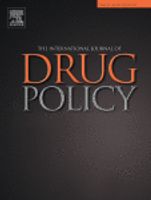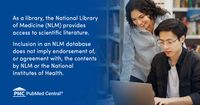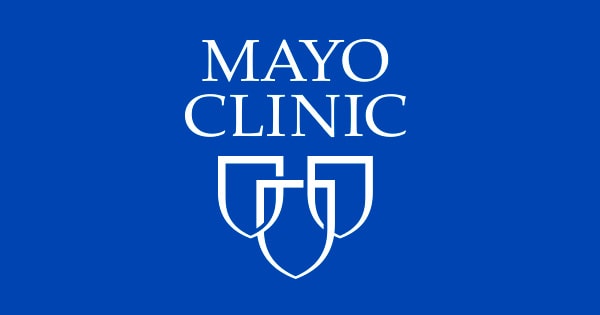Explore web search results related to this domain and discover relevant information.

In this paper, we explore how the social harm approach can be adapted within drug policy scholarship. Since the mid-2000s, a group of critical crimino…
In this paper, we explore how the social harm approach can be adapted within drug policy scholarship. Since the mid-2000s, a group of critical criminologists have moved beyond the concept of crime and criminology, towards the study of social harm.This turn proceeds decades of research that highlights the inequities within the criminal legal system, the formation of laws that protect the privileged and punish the disadvantaged, and the systemic challenge of the effectiveness of retribution and punishment at addressing harm in the community. The purpose of this paper is to first identify parallels between the social harm approach and critical drug scholarship, and second to advocate for the adoption of a social harm lens in drug policy scholarship.In the paper, we draw out the similarities between social harm and drug policy literatures, as well as outline what the study of social harm can bring to an analysis of drug policy. This includes a discussion on the ontology of drug crime, the myth of drug crime and the ineffective use of the crime control system in response to drug use.The paper then discusses how these conversations in critical criminology and critical drugs scholarship can be brought together to inform future drug policy research. This reflection details the link between social harm and the impingement of human flourishing, explores the role of decolonizing drug policy, advocates for the centralization of lived experience within the research process and outlines how this might align with harm reduction approaches.
Discussion: We discuss the clinical relevance of social cognition alterations and their potential utility in improving diagnostic and therapeutic processes for individuals with substance use disorders. Substance Use Disorders (SUD) are an increasing challenge for healthcare systems worldwide, driven by, among other factors, the high number of individuals using drugs ...
Discussion: We discuss the clinical relevance of social cognition alterations and their potential utility in improving diagnostic and therapeutic processes for individuals with substance use disorders. Substance Use Disorders (SUD) are an increasing challenge for healthcare systems worldwide, driven by, among other factors, the high number of individuals using drugs within a context of expansive production, market growth, and accessibility.It is estimated that over 290 million people used drugs in 2022, a 20% increase compared to the previous decade. Approximately 64 million individuals suffer from SUD, yet only 1 in 11 people receive treatment, 1 in 18 among women compared to 1 in 7 among men (1). Furthermore, the multifactorial etiopathogenesis of SUD complicates the development of improved preventive and therapeutic strategies. Despite advances in understanding the biological, psychological, and social mechanisms underlying the disorders (2, 3), the translation of this knowledge into clinical practice remains limited.Previous research has identified ToM impairments in individuals with SUD using tools like the Movie for the Assessment of Social Cognition (MASC) (64) or the Reading the Mind in the Eyes Test (RMET) (65). A meta-analysis supports that drug users perform worse than healthy controls, with stronger evidence for ToM impairments in studies on alcohol and methamphetamine dependence, mixed findings for cocaine users, and no ToM impairments in recreational cannabis or cocaine users.Furthermore, differences in the total scores of the facial emotion recognition (EFT score) task indicate that these individuals fail to accurately recognize basic emotions through facial expressions. When comparing SUD patients with non-clinical populations, we aimed to highlight the association between the severity of drug use and alterations in specific cognitive domains, such as social cognition.

Any drug that is misused can cause damage to the body, as well as personal and social problems.
Different types of recreational drugs affect the body in different ways. Find out more with Bitesize. For students between the ages of 11 and 14.Recreational drugs can be classified as depressants, those that supress and slow down messages in the brain and along the nerves, or stimulants, those that excite or speed up messages in the brain and along the nerves.Some recreational drugs are legal, such as tobacco and alcohol. However, there are restrictions on who can buy them. Most other recreational drugs are illegal, and these include cannabis, ecstasy, heroin and ketamine. Some medicines are misused and taken for recreational use, rather than for medical reasons.Illegal drugs are classified from Class A to Class C. Class A drugs are most dangerous, with the most serious penalties for possession or dealing. Class C drugs are the least dangerous, with the lightest penalties, but this does not mean they are safe to take.
Learn how recreational drugs and alcohol can affect your mental health. Find support options for drug and alcohol addiction, including helping someone else.
Recreational drugs and alcohol can affect your mental health in lots of different ways. And it can be hard to know where to find support if you are struggling with addiction.These pages have information to help you understand the impact drugs and alcohol can have on your mental health.Learn how drugs and alcohol can affect your mental health, including whether they can cause mental health problems.Read about ways to get help for recreational drug and alcohol use, including help through your GP and local support groups.
SAMHSA leads efforts to advance behavioral health across the U.S., offering resources for mental health, substance use, and community well-being.
3 out of 10 people in the United States have issues with mental health, drugs, or alcohol.

Direct-to-consumer drug advertising ... drug companies spent $10.8 billion in 2024 on direct-to-consumer pharmaceutical advertising. But advertising standards have declined as some advertisements have gone online. A 2015 study revealed that while 100% of the analyzed pharmaceutical social media ...
Direct-to-consumer drug advertising ... drug companies spent $10.8 billion in 2024 on direct-to-consumer pharmaceutical advertising. But advertising standards have declined as some advertisements have gone online. A 2015 study revealed that while 100% of the analyzed pharmaceutical social media posts ...Direct-to-consumer drug advertising continued to be big business: according to advertising data firm MediaRadar, drug companies spent $10.8 billion in 2024 on direct-to-consumer pharmaceutical advertising. But advertising standards have declined as some advertisements have gone online. A 2015 study revealed that while 100% of the analyzed pharmaceutical social media posts included drugs’ purported benefits, only 33% discussed potential harms.That provision, the agency said, provided a “loophole” for companies to redirect consumers elsewhere for additional information on the drug while keeping the ad brief. During a Tuesday call with reporters, senior administration officials said the memorandum will also target ads on social media sites, such as Instagram and TikTok.One official said, according to ABC News, that “there has been broad frustration with the increasing prevalence of these ads creating a misleading impression, specifically not disclosing side effects appropriately—ads that have encroached now into social media without proper disclosures, and ads of online pharmacies that are not following the same rules that many pharmaceutical companies follow.” ... It’s not the first time Trump has targeted drug advertisements.


Substance use stigma is a form of group-based exclusion, and delineating pathways from stigma to poor health requires a deeper understanding of the social dynamics of people who use drugs (PWUD). Outside of recovery, scant research has examined the role of social identity in addiction.
Framed by Social Identity Theory/Self-Categorization Theory, this qualitative study investigated strategies of within-group categorization and differentiation among PWUD and the roles these social categories may play in shaping intragroup attitudes, perceptions, and behaviors. Data come from the Rural Opioid Initiative, a multi-site study of the overdose epidemic in rural United States. We conducted in-depth interviews with people who reported using opioids or injecting any drug (n=355) living in 65 counties across 10 states.Interviews focused on participants’ biographical histories, past and current drug use, risk behaviors, and experiences with healthcare providers and law enforcement. Social categories and dimensions along which categories were evaluated were inductively identified using reflexive thematic analysis.We identified seven social categories that were commonly appraised by participants along eight evaluative dimensions. Categories included drug of choice, route of administration, method of attainment, gender, age, genesis of use, and recovery approach. Categories were evaluated by participants based on ascribed characteristics of morality, destructiveness, aversiveness, control, functionality, victimhood, recklessness, and determination.Participants performed nuanced identity work during interviews, including reifying social categories, defining ‘addict’ prototypicality, reflexively comparing self to other, and disidentifying from the PWUD supra-category. We identify several facets of identity, both behavioral and demographic, along which people who use drugs perceive salient social boundaries.
Kendra M. Ivy Silberman School of Social work at Hunter College, CUNY · Ashton E. Santo · Sheila P. Vakharia Drug Policy Alliance
Despite broad support by community stakeholders, law enforcement, and the National Association of Social Workers (NASW), this approach remains fraught if we do not critically examine our role as agents of social control in such systems. A clear case study is the War on Drugs, wherein social workers have assumed the role of frontline enforcers through our employment in the criminal legal and child welfare systems, health care, and coercive drug treatment programs.The harsh and punitive laws stemming from the War on Drugs have contributed to the mass criminalization of people who use drugs, devastated communities, separated families, and so much more. Our focus should shift towards upstream advocacy for policies to reduce the scope of the criminal legal system altogether. We propose suggestions to re-envision social work’s role in less punitive and carceral responses.Gallagher, J. R., Nordberg, A., Szymanowski, S., & Malone, S. E. (2019). A behind-the-scenes perspective on the key components of drug court: A narrative analysis. Journal of Human Behavior in the Social Environment, 29(7), 909-921.The drug court team and discretionary decision-making: A mixed-methods examination of sanctioning responses to continued participant alcohol and other drug use. Criminal Justice Policy Review, 32(1), 27-48. https://doi.org/10.1177/0887403420904127 · Gregory, J. A. (2021). Social work as a product and project of whiteness.
Community misused or used drugs chart in an A to Z listing. Basic information on drugs with addictive potential, including how they are used, how they make people feel, and their health effects, including risk for substance use disorder. Treatment options for substance use disorders related ...
Community misused or used drugs chart in an A to Z listing. Basic information on drugs with addictive potential, including how they are used, how they make people feel, and their health effects, including risk for substance use disorder. Treatment options for substance use disorders related to these drugs are also included.Ayahuasca is a tea often made from the plant Psychotria viridis, which contains the psychedelic drug dimethyltryptamine (DMT) and the vine Banisteriopsis caapi. But sometimes other plants are used. Historically, it has been used by indigenous South Americans of the Amazon for religious and healing rituals.Very little scientific research has been conducted on ayahuasca. Psychedelic drugs related to DMT, such as psilocybin and LSD, are generally considered to have low addiction potential, although it is possible for people to develop a hallucinogen-related substance use disorder.Drugs A to Z gives basic information on drugs with addictive potential, including how they are used, how they make people feel, and their health effects, including risk for substance use disorder.

The drug ±3,4-methylenedioxymethamphetamine (MDMA, “ecstasy”, “molly”) is thought to produce pro-social effects and enhance social interaction. However, in most laboratory studies to date, the participants have ...
Healthy experienced MDMA users participated in three laboratory sessions in which they received MDMA (0.5 or 1.0 mg/kg or placebo; double blind). They were randomly assigned to one of three social conditions, in which they were tested alone (SOL; N=10), in the presence of a research assistant (RAP; N=11) or in the presence of another participant who also received the drug (OPP; N=11).As expected, MDMA increased heart rate and blood pressure, and produced positive subjective effects in all three groups. It also increased ratings of attractiveness of another person and increased social interaction in RAP and OPP. The social context affected certain responses to the drug.The effects of MDMA were greater in the OPP condition, compared to the SOL or RAP conditions, on measures of “feel drug”, “dizzy” and on cardiovascular measures. But responses to the drug on other measures, including social behavior, did not differ across the conditions.These findings provide some support for the idea that drugs produce greater effects when they are used in the presence of other drug users. However, the influence of the social context was modest, and it remains to be determined whether other variables related to social context would substantially alter the effects of MDMA or other drugs.

Fatal drug overdoses, now primarily driven by illicit opioids like fentanyl, continue to increase in the United States, reflecting a growing need for …
Fatal drug overdoses, now primarily driven by illicit opioids like fentanyl, continue to increase in the United States, reflecting a growing need for prevention and treatment strategies. Preventive interventions have primarily focused on curbing opioid prescribing, and treatment strategies target individuals. However, little is known about the broader social context surrounding these individuals.Furthermore, a multivariate analysis was performed to detect risk factors of drug overdose death while adjusting for multiple comparisons. All statistical analyses were performed with SAS version 9.4. SDOH, including violent crime (P < 0.001), access to the Internet (P < 0.001), per capita income (P < 0.001), social vulnerability index (P = 0.001), and access to health care (P < 0.001), demonstrated a statistically significant positive association with drug overdose death.In contrast, vacancy rate was negatively associated with drug overdose mortality (P < 0.001). The association between drug overdose deaths and opioid prescription rates was not statistically significant (P = 0.412). Factors such as violent crime and social vulnerability demonstrated a statistically significant impact on drug overdose mortality.We found that SVI was strongly associated with drug overdose deaths given that counties with higher SVI scores had higher rates of drug overdose deaths. This finding is consistent with a findings of a study that demonstrated a statistically significant positive association between overdose death rate and social vulnerability characteristics such as unemployment, percent civilian disabled,

We also know that every £1 spent on drug treatment is associated with a social and economic return of £4. This includes reductions in health and social care and offending costs, and improvements in quality-adjusted life years (QALYs).
The National Institute for Health and Care Excellence (NICE) clinical guideline 64 recommends that health and social care professionals routinely assess whether people in groups at risk are vulnerable to drug misuse.You can use the Alcohol, Smoking and Substance Involvement Screening Tool – Lite (ASSIST-Lite) to identify alcohol, drug and tobacco smoking-related risk and to deliver appropriate interventions to help the service user reduce these risks. There is one version of the ASSIST-Lite tool for use in mental health services and one for use in other health and social care services.You can find out everything you want to know about drugs, and where to get help on the FRANK website. The cannabis health check-up tool outlines the benefits of cutting down or quitting cannabis, tips for reducing cannabis use, and signposts to sources of advice, support and treatment. It also provides space for people to set their own goals to reduce cannabis use and risk. The tool is designed to be used by health and social care professionals with people whose cannabis use is identified as ‘increasing’ or ‘higher risk’ by the ASSIST-Lite screening tool.NICE also advises that health and care professionals are open to the possibility that drug use may be a factor in their patient’s health or linked to other social issues, such as debt or housing problems.

Substance use disorders are associated with severe negative social and health-related outcomes. Evidence has accumulated that long-term substance use …
Substance use disorders are associated with severe negative social and health-related outcomes. Evidence has accumulated that long-term substance use is associated with alterations in social interaction behavior, which likely contributes to the vicious cycle of substance use disorder.We identified common substance use patterns using toxicological hair analysis, examined behavioral alterations with incentivized games, and used teacher assessments across different ages to determine the causes and effects that underlie substance use–related impairments in social interaction.We found that opioid and stimulant users showed reduced prosocial behavior compared with nonusers, particularly in interpersonal trust and perspective taking (e.g., they were approximately 50% less likely to trust others). Our longitudinal analyses suggest a causal relationship between the nonmedical use of prescription opioids and impaired social behavior, whereas impairments among stimulant users seem to be partially predisposed.However, little is known about whether these social problems originate from contextual factors only or also from the substance use itself—in other words, if they are predisposed or substance induced.
A regular recreational drug habit is expensive; obtaining the money for it can lead to crime, especially when the person is addicted and cannot stop. Social problems. People regularly using recreational drugs may behave in different ways. This may cause problems with their relationships or ...
Cost. A regular recreational drug habit is expensive; obtaining the money for it can lead to crime, especially when the person is addicted and cannot stop. Social problems. People regularly using recreational drugs may behave in different ways. This may cause problems with their relationships or they may lose their job.Roadside drug screening devices use spit (saliva) to identify if the person driving or in control of the vehicle has taken a drug as listed above. Following a positive result using saliva, you can then be asked to provide a blood sample for evidential purposes, to allow prosecution for the new offence (if you are above the specified limit). They may become more moody or have mood swings (but remember, teenagers can be moody for lots of reasons!). They may start staying out later, or socialising with new friends.Either on your own, or with the person you are worried about, you can go and speak to your GP and ask advice. Or, you can contact one of the many organisations that help people who are misusing drugs. Several of these are listed below. They can give you advice and support. School nurses, teachers, or social workers may also be able to help and advise.Recreational drugs are chemical substances taken for enjoyment rather than for medical reasons. Examples include MDMA, cannabis, cocaine, and ketamine.

The Trump administration announced plans to crack down on pharmaceutical advertising on television and social media platforms that could disrupt billions of dollars in annual ad spending. President Donald Trump signed a presidential memorandum on Tuesday that calls on federal health agencies ...
That FDA change in 1997 allowed ads to disclose fewer side effects and also allowed companies to direct customers to talk to their doctors, call a telephone number or visit a website to get more information on the advertised drugs. In the following years, TV pharma ad spending surged. Last year, 59% of the pharmaceutical industry’s expenditures were on TV advertising, making pharma the third-highest spending industry, according to MediaRadar. Social Media The Trump administration is also planning to ensure drug ads made by influencers and other social media posts abide by the same standards applied to TV, an administration official said.In 2023, a Bloomberg Law investigation found that the FDA’s prescription drug office had sent just a handful of warning letters to pharmaceutical companies about ad violations or questionable promotional activities on social media platforms including Facebook, Instagram and YouTube.None of the letters available in the database mention TikTok, the social media platform that’s recently exploded with mentions of popular weight-loss medications, including sponsored posts for telehealth companies that sell the drugs. TikTok and other platforms have taken steps to rein in weight-loss related content, though it hasn’t been easy.The telehealth company is far from the only one, however, that advertises access to prescription drugs for common conditions like erectile dysfunction, weight loss and hair loss. Earlier Tuesday, the administration mentioned greater enforcement by HHS, FDA, the Federal Trade Commission and the Department of Justice on ads run by telehealth companies and social media influencers in its Make America Healthy Again strategy it released.

This chapter describes the side effects of social drugs including cannabis. The user is likely to experience a heightening of sensation, but as a resu…
This chapter describes the side effects of social drugs including cannabis. The user is likely to experience a heightening of sensation, but as a result, he appears to be content to savor passively the stimuli reaching him from his surroundings, rather than to react to them.Physically, cannabis induces tachycardia and orthostatic hypertension, and the smoking of the drug can increase the chances of chronic respiratory disorders. Any drug, which induces euphoria, impairs judgement, slows reaction times, or impairs motor function in any other way is dangerous for drivers.The effects of cannabis on the cardiovascular system suggest a need for caution in the use of antihypertensive drugs, especially those tending to cause orthostatic hypotension, and in the use of agents themselves prone to induce tachycardia, such as the sympathomimetic agents.Information Letter, U. N. Division of Narcotic Drugs, June 1976, p....

Drug addiction affects your brain and behavior to the point where you can't control your use of legal or illegal drugs, even when you know they cause harm.


This chapter discusses the various implications of use of social drugs. The examples include pheneyelidine, cocaine, cannabis, volatile nitrites, and …
This chapter discusses the various implications of use of social drugs. The examples include pheneyelidine, cocaine, cannabis, volatile nitrites, and pentazoeine. Phencyclidine (PCP) abuse—a serious societal problem in various countries—has been the subject of a number of articles over the past year.In a review of its adverse effects, the drug, as expected, has central stimulant and sympathomimetic properties, which produce euphoria, increased energy, tachycardia, elevated blood pressure, dilated pupils, constriction of peripheral blood vessels, and increase in body temperature and metabolic rate.The use of cocaine as a recreational drug continues to be widespread.International Journal of Drug Policy, Volume 40, 2017, pp.
We know that these drugs have side effects and in some cases, are fatal but people still continue to take them. A new trend has recently appeared in which women use drugs such as testosterone in order to boost their assertiveness and confidence at work in the hope of furthering their career.
Risk factors for drug addiction · Stress and addiction · Social use of drugs · What is pseudo-addiction · Am I Addicted to drugs · Social effects of drug addiction · Drug addiction and crime · Types of addictions · Alcohol addiction · Caffeine addiction ·It may be that you have strong enough willpower to stop your addiction but this is easier said than done. Some drugs such as cocaine, heroin or amphetamines are highly addictive and can lead to an addiction the first time they are used.Smoking and drugs in general are not considered good for your health irrespective of the dose.Drugs such as cannabis or cocaine may ‘help’ in terms of an instant ‘high’ and an escape from reality but they are highly addictive and dangerous to health.

The social environment plays a critical role in determining the likelihood that an individual will use drugs or will develop a drug use disorder. Recent evidence obtained from preclinical studies reveals that proximal social factors (i.e., those factors ...
Recent evidence obtained from preclinical studies reveals that proximal social factors (i.e., those factors that are immediately present at the time of drug exposure) exert a particularly strong influence on both drug-seeking and drug-taking behavior.These studies are advancing our understanding of the role of the social environment in drug use by showing that the rewarding and reinforcing effects of drugs depend on (1) whether other individuals are immediately present and (2) whether those individuals are also using drugs.Furthermore, the preclinical literature examining the role of social learning in behavior maintained by nondrug reinforcers reveals a number of behavioral mechanisms by which social contact may influence drug use, as well as potential ways the social environment may be modified to prevent or reduce drug use.Additional research is needed to determine potential age and sex differences in the effects of social contact on drug use, to determine the generality of the current findings across different pharmacological classes of drugs, and to determine the role of social contact on drug intake during different transitional stages of drug use disorders; however, enough evidence now exists to begin implementing social interventions in clinical and at-risk populations.










